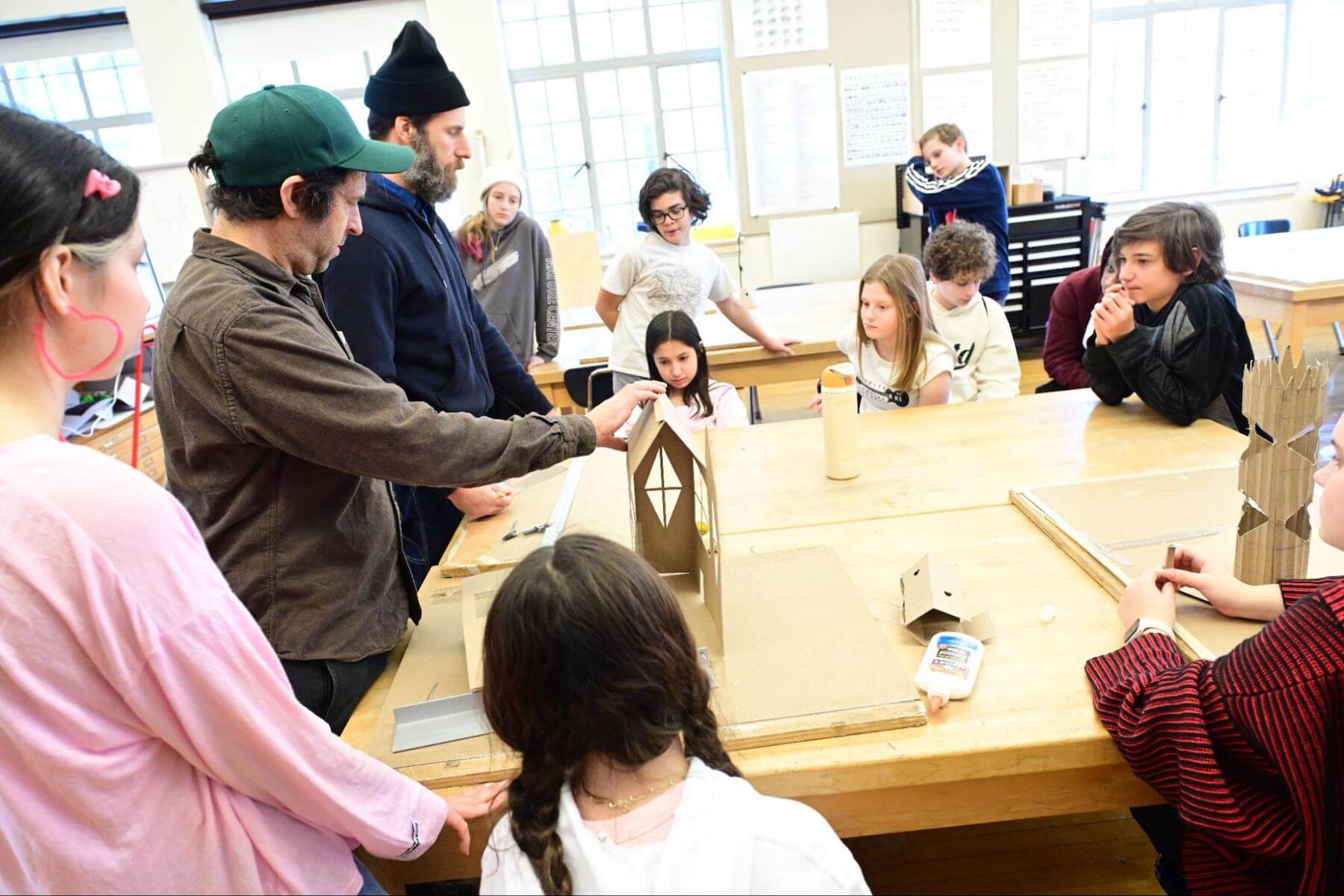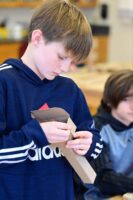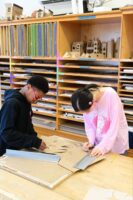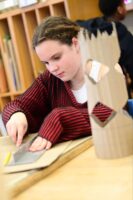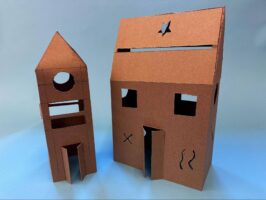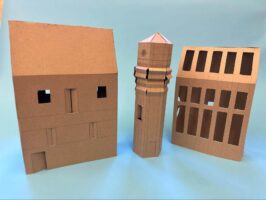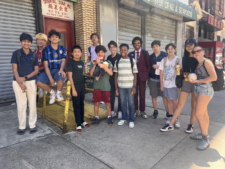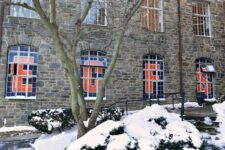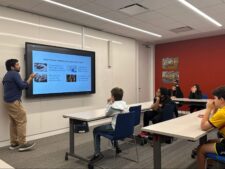At the Ethical Culture Fieldston School, students encounter classroom experiences that help them discover new passions to nurture throughout their school journey. Fieldston Middle’s 7th Graders have the opportunity to engage in new discoveries in their Model Building class. This course introduces both design and global concepts that students may choose to explore in greater detail during their future architecture classes as Fieldston Upper students.
Co-taught by Visual Arts Department Chair Scott Wolfson and Visual Arts Teacher Marc Ganzglass, 7th Grade Model Building allows students to experiment with materials and learn how to apply the study of measurements and mathematics to construct a final object. Throughout students’ four-week Model Building rotation, the process of recognizing the connections between their own creations and real-world structures emerges as a pivotal class experience.
“Students are encouraged to think about how the built world comes into being,” Wolfson shares. “Why do buildings look the way they do? Who are they for? What is their relationship to the built environment and what decisions do architects consider when designing buildings? Through designing, drawing, and building models, students are beginning to ask questions about the world around them. Some ask questions that are more aesthetic and others more social and political. Students explore how the field of architecture can engage us in larger questions around economics, social living, disaster relief, and how the buildings we inhabit and use are a reflection of who we are as a society.”
“The class is also a wonderful introduction to studio culture,” Ganzglass adds. “It’s 18 students working creatively with hands-on skills and real-world materials. The atmosphere they generate is lively, and ideas percolate and are shared freely. In many ways, the studio itself is a model of a way of working that can be applied to many fields.”
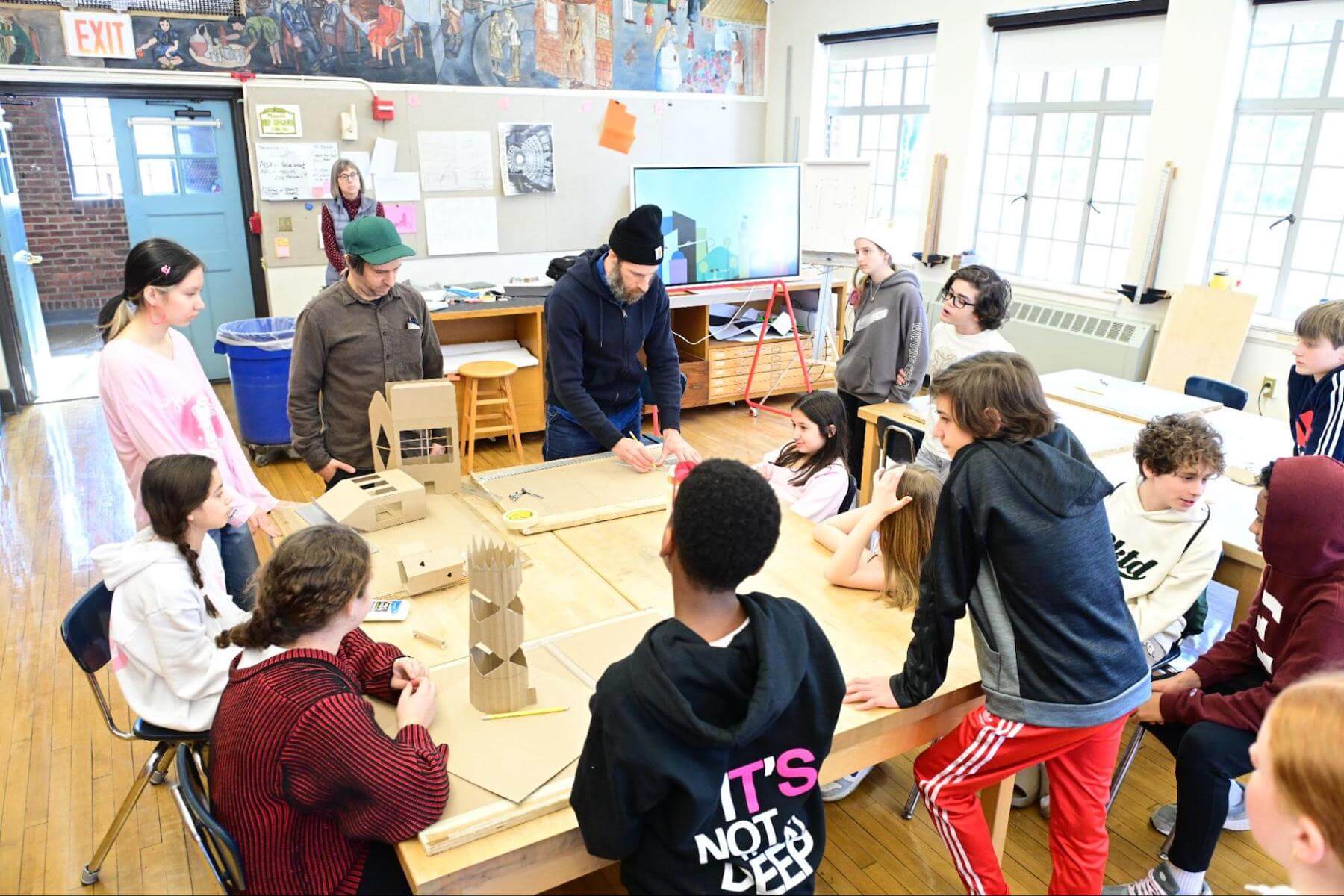
Students recently created cardboard towers with four, five, or six sides and a minimum of five openings, including windows and doors. Utilizing creativity, one 7th Grader aimed to model their tower rooftop after a flower, while another attempted a star-shaped roof.
“We show students the basic method of building the tower and some examples of different types of windows before setting them loose to design their own models,” Wolfson says. “From what we demonstrate, students have the basics for designing much more complicated things. The possibilities for the students’ designs are limitless depending on skill level, comfort with the tools, and inventiveness.”
Other course projects include making a pyramid and a house. Despite running into challenges when elevating a two-dimensional plan into a three-dimensional object, students ultimately grow to appreciate creating something out of nothing.
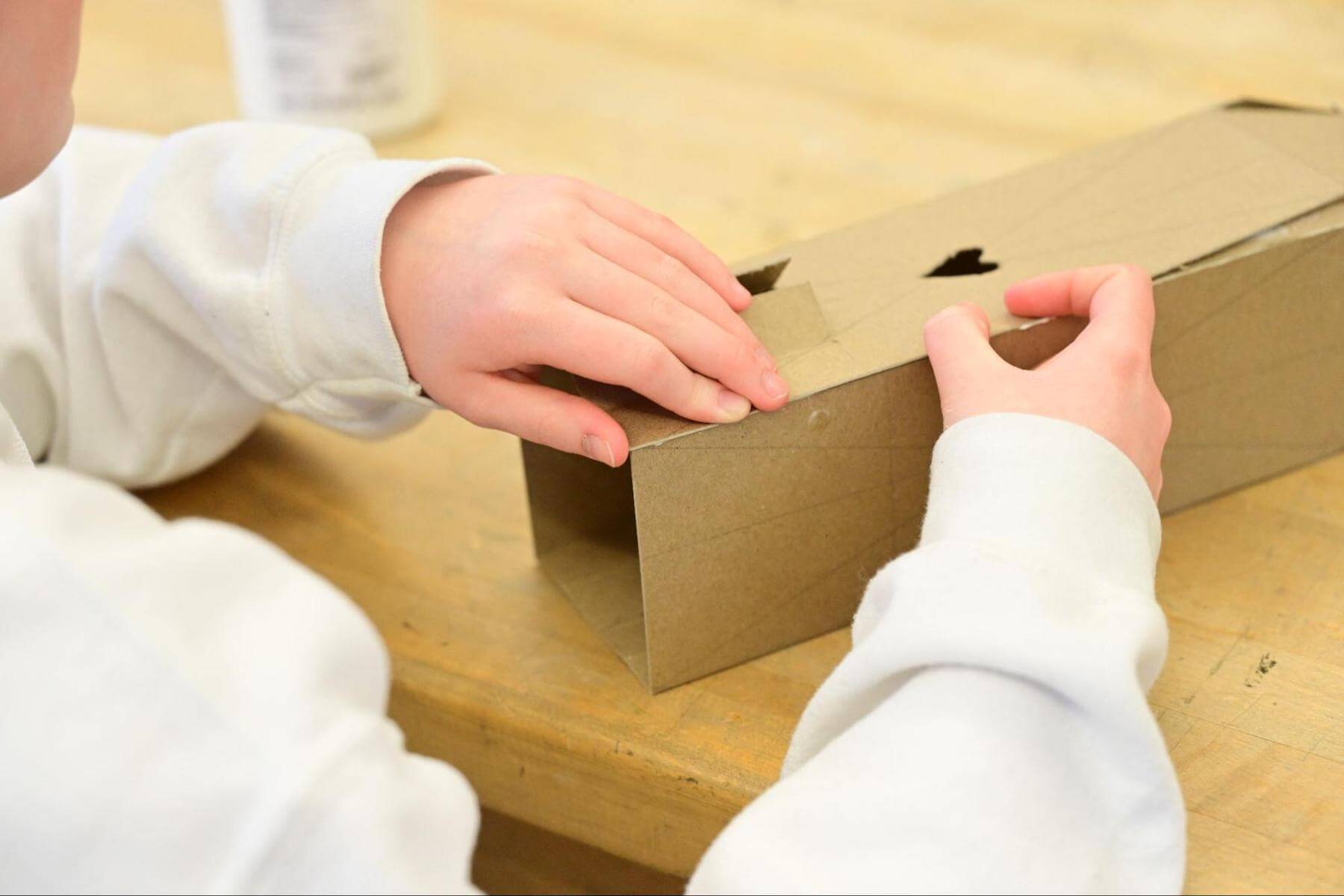
“It’s a different way to see things,” says Andrew E. ’29. “You can break something apart to see how it forms and how it works.”
“I like being creative, and I think I’m definitely going to take this class in high school,” Ess S. ’29 says.
“The basic ideas of the class are learning how to think and work between two and three dimensions and gaining an understanding of and confidence with the basic tools of architectural drafting and model making,” Wolfson says. “And, of course, simply giving students a fun, engaging, and hands-on introduction to architecture. These skills are built upon in Fieldston Upper architecture classes.”
“Model making is unique in that it is a bridge from geometry and drawing, which students are exposed to in middle school, to design thinking and learning about the built environment,” Ganzglass says. “In the Fieldston Upper architecture classes, we teach more technical drafting, scale drawing, and model-making techniques, as well as learning about form and space.”
“Because the projects involve a lot of techniques, whether drafting, cutting, or assembling, and that these techniques build in complexity and quantity in each project, students actually gain experience and develop muscle memory and visual acuity over the course,” says Ganzglass about the 7th Grade class. “The adage that craft is learned through cycles of repetition and observation is true here. Do something and then do it again and again.”
As with any kind of plan, Model Building students learn that things might not always align with their initial visions, but determining how to reinvent an idea is where the most significant lessons come to life. “We work very closely with each student to meet them where they are in the process, whether that’s to guide them more directly or to challenge them further,” Wolfson says. “This class becomes so fun because of the inventive and wild ideas that the students bring and the ah-ha moments when students figure out something new. It really becomes a playful, collaborative space of invention and exploration.”
